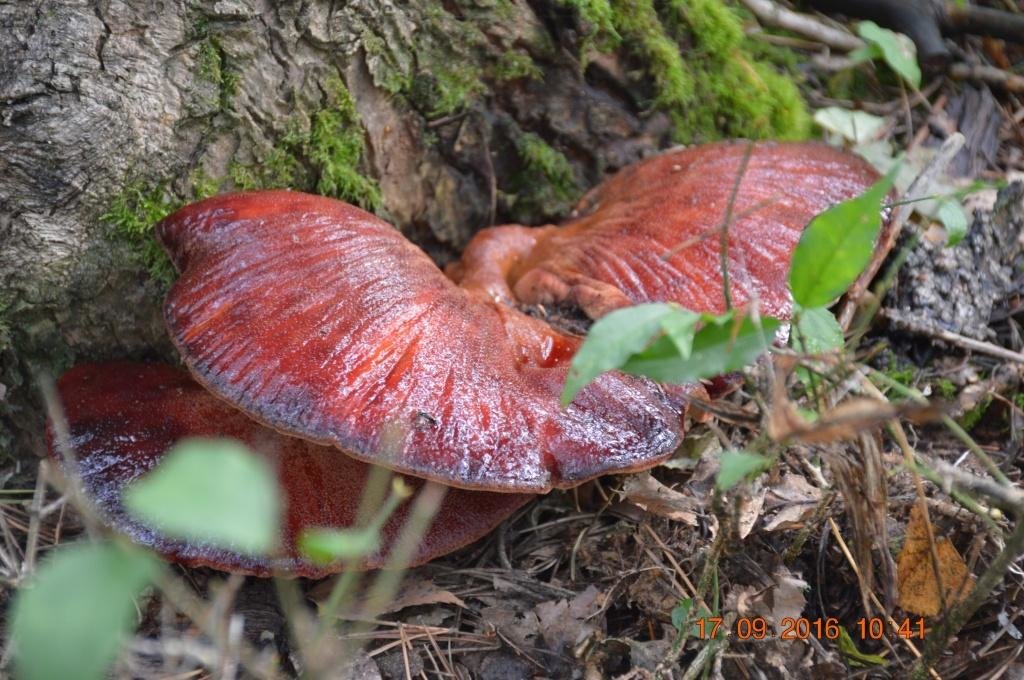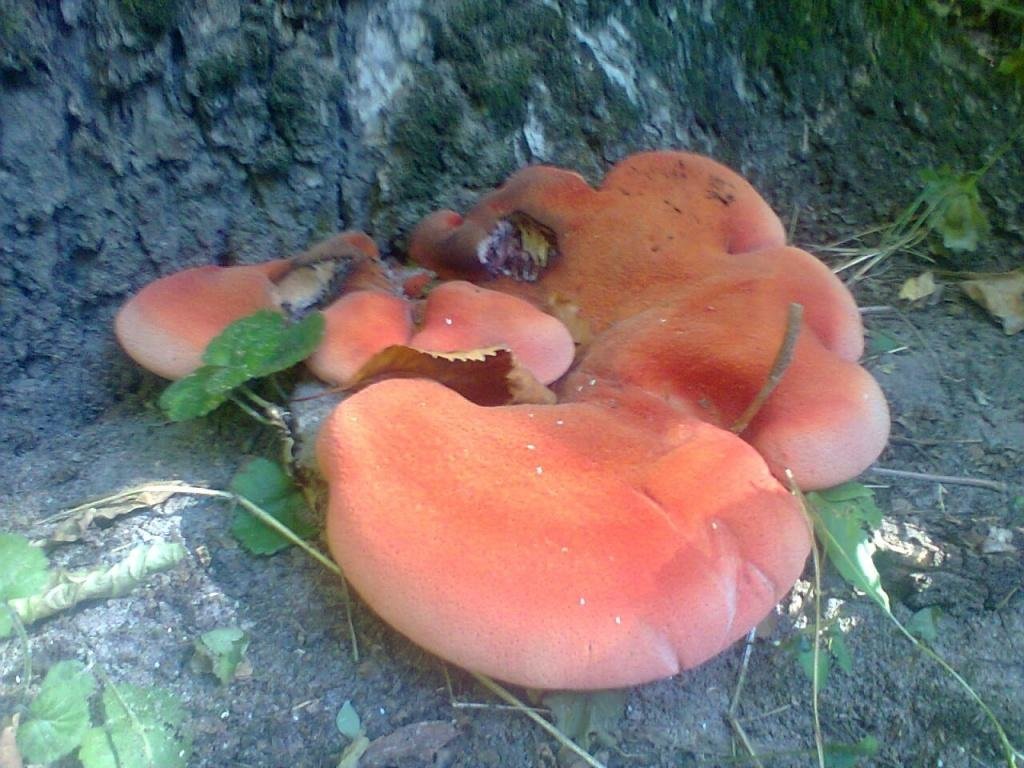Fistulina hepatica
- Division: Basidiomycota (Basidiomycetes)
- Subdivision: Agaricomycotina (Agaricomycetes)
- Class: Agaricomycetes (Agaricomycetes)
- Subclass: Agaricomycetidae (Agaricomycetes)
- Order: Agaricales (Agaric or Lamellar)
- Family: Fistulinaceae (Fistulinaceae or Liverwort)
- Genus: Fistulina (Fistulina or Liverwort)
- Type: Fistulina hepatica (Common liverwort)

In English-speaking countries, it is called “steak” or “ox tongue”. In the -speaking tradition, the name “mother-in-law’s language” is often found. This mushroom looks like a piece of red meat stuck to the stump or base of a tree. And it really looks like beef liver, especially when it starts to secrete blood-red juice in places of damage.
head: 7–20, according to some sources up to 30 cm across. But this is not the limit, the author of this note came across specimens and more than 35 cm in the widest part. Very fleshy, the thickness of the cap at the base is 5-7 cm. Irregular in shape, but often semicircular, fan-shaped or tongue-shaped, with a lobed and wavy edge. The surface is wet and sticky in young mushrooms, dries out with age, slightly wrinkled, smooth, without villi. Color liver red, reddish orange or brownish red.

spore layer: tubular. White to pale pinkish in color, then becoming yellowish and eventually reddish brown in advanced age. At the slightest damage, with slight pressure, it quickly acquires a reddish, red-brown, brown-fleshy color. The tubules are clearly separated, up to 1,5 cm long, round in cross section.
Leg: lateral, weakly expressed, often absent or in its infancy. It is painted on top in the colors of the cap, and whitish below and covered with a hymenophore descending on the leg (spore-bearing layer). Strong, dense, thick.
Pulp: whitish, with reddish stripes, the cross section looks very beautiful, on it you can see an intricate pattern resembling marble. Thick, soft, watery. At the site of the incision and when pressed, it secretes a reddish juice.

Smell: slightly mushroomy or almost odorless.
Taste: slightly sour, but this is not a necessary feature.
spore powder: Pale pinkish, pinkish brown, rusty pink, pale brown.
Microscopic Features: spores 3–4 x 2–3 µm. Broadly almond-shaped or subellipsoid or sublacrimoid. Smooth, smooth.
Hyaline to yellowish in KOH.
It is saprophytic and is sometimes listed as “weakly parasitic” on oak and other hardwoods (such as chestnut), causing brown rot.
Fruit bodies are annuals. The liverwort grows alone or in small groups at the base of trees and on stumps, from early summer to mid-autumn. Sometimes you can find a liverwort growing as if from the ground, but if you dig out the base of the stem, there will certainly be a thick root. Widely distributed on all continents where there are oak forests.
There are several varieties, such as Fistulina hepatica var. antarctica or Fistulina hepatica var. monstruosa, which have their own narrower ranges and distinctive features, but do not stand out as separate species.
Liver mushroom is so unique in its appearance that it is simply impossible to confuse it with any other mushroom.
The liverwort is edible. Too mature, overgrown mushrooms may have a slightly more sour taste.
One can argue about the taste of the liverwort, many do not like the texture of the pulp or sourness.
But this sour taste comes from the increased content of vitamin C in the pulp. 100 grams of fresh liverwort contains the daily norm of this vitamin.
The mushroom can be cooked right in the forest, during a picnic, on a grill. You can fry in a pan, as a separate dish or with potatoes. You can marinate.
Video about the common liverwort mushroom:
Photographs from the questions in “Recognition” were used as illustrations for the article.









